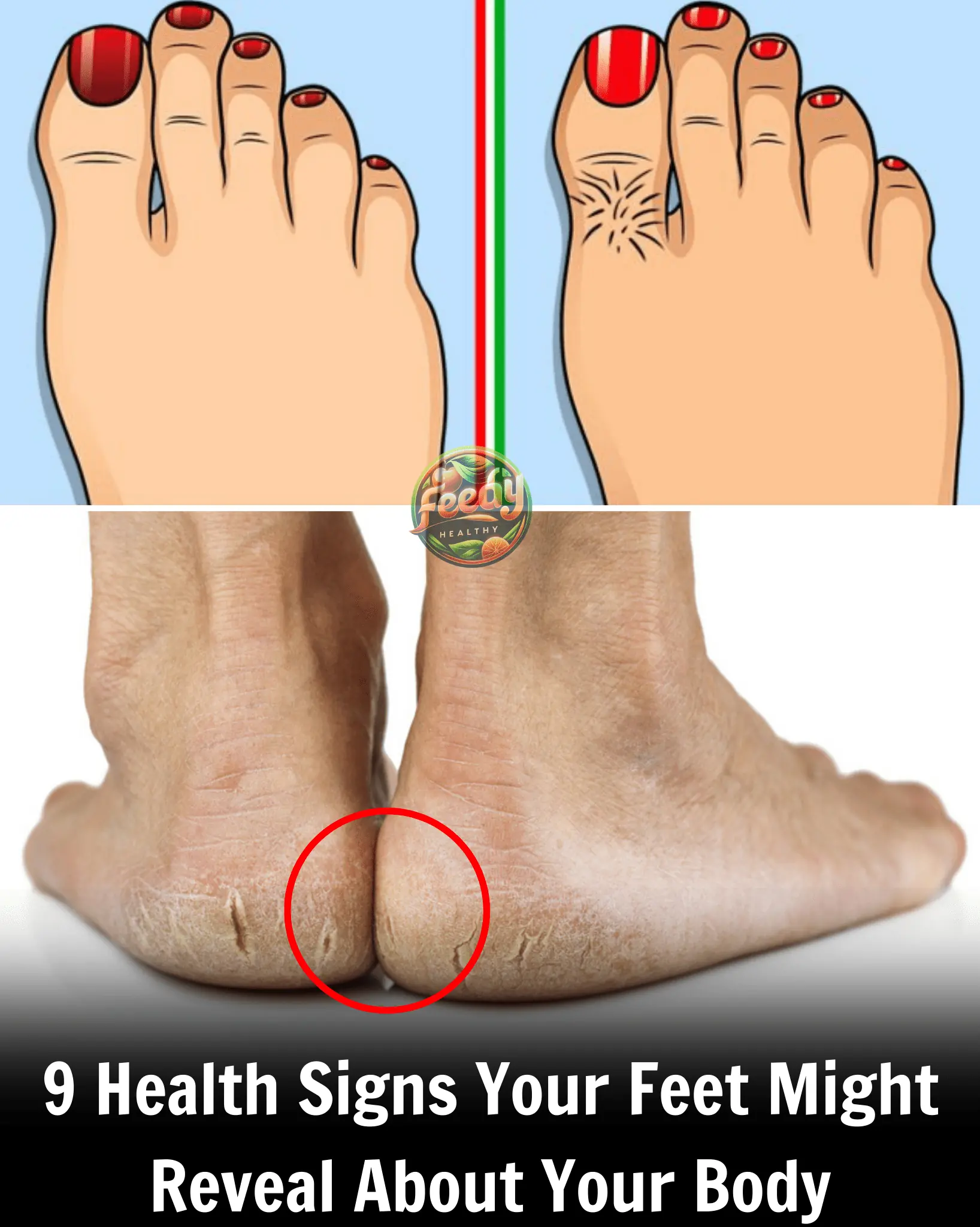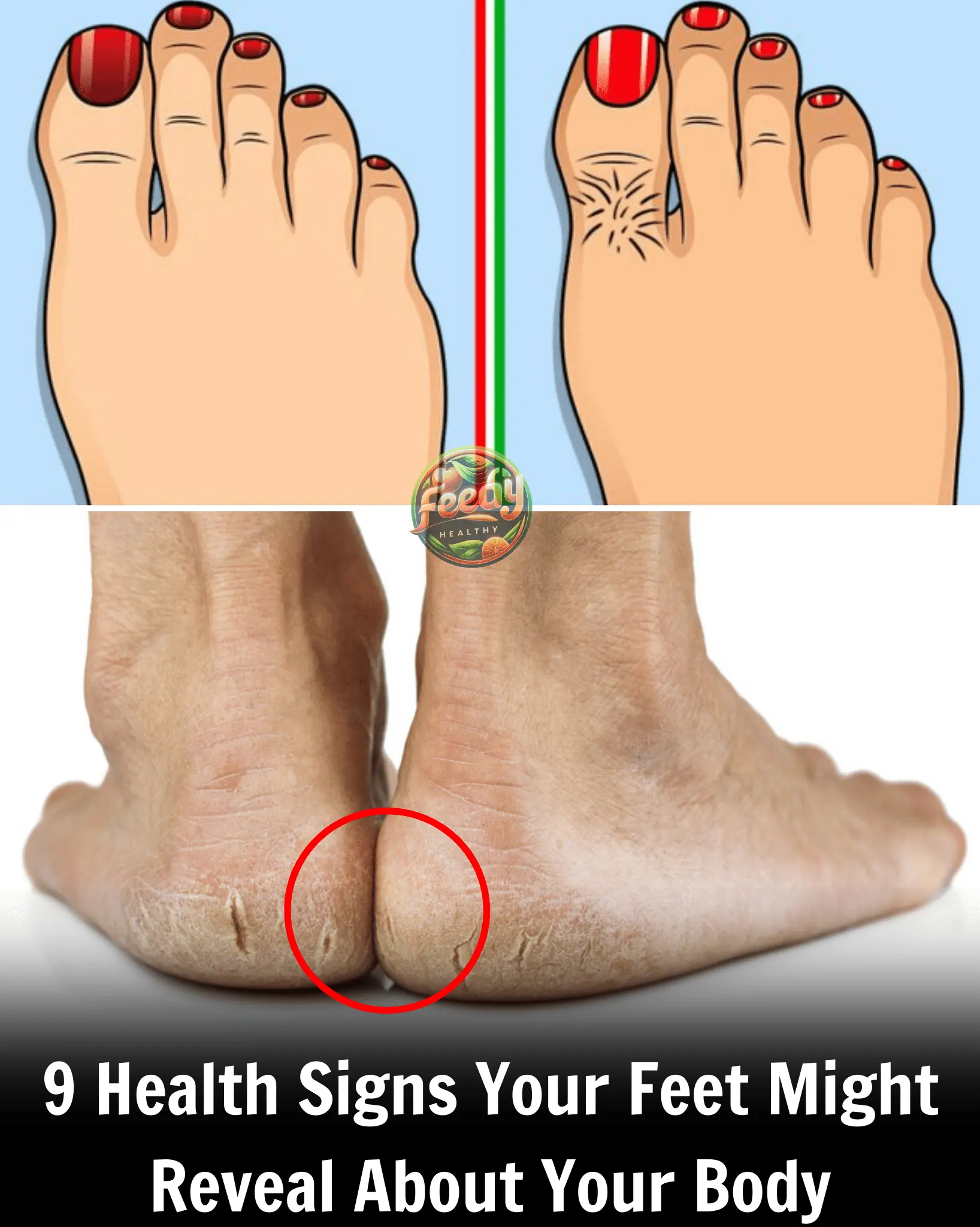10 Ways Your Feet Are Telling You Something About Your Health

Your feet are not just for walking; they serve as a mirror to your overall health. Observing changes in them can help detect health issues before they become severe, from circulatory problems to neurological disorders. Here are some crucial warning signs your feet might be sending about your well-being.
1. Cold Feet: A Sign of Circulatory Problems
If your feet are consistently cold, it may indicate poor blood circulation, which can be linked to smoking, high blood pressure, or heart disease. Another possible cause is nerve damage due to uncontrolled diabetes, leading to a constant cold sensation. If this symptom persists, it is essential to seek medical advice.
2. Foot Pain: Possible Sign of Stress Fractures or Osteoporosis
Persistent foot pain, especially when not caused by ill-fitting shoes, may be a sign of stress fractures or weakened bones due to osteoporosis. High-impact activities, such as running or basketball, can contribute to small bone cracks that require medical attention to prevent further complications.
3. Swollen Feet: A Warning of Serious Health Conditions
While swelling in the feet can result from prolonged standing or pregnancy, persistent swelling could signal serious conditions like poor circulation, kidney disease, or an underactive thyroid. If you notice ongoing swelling, it’s important to consult a doctor.
4. Burning Sensation: Could Be Peripheral Neuropathy
A burning sensation in the feet is often linked to diabetic peripheral neuropathy. However, it can also be due to vitamin B deficiency, chronic kidney disease, or poor circulation. Identifying and treating the underlying cause with a healthcare provider can help relieve this discomfort.
5. Dark Spots: A Warning Sign of Skin Cancer
Skin cancer, including melanoma, can develop on the feet—even under the toenails. Any unusual dark spots should be examined by a doctor, as early detection is crucial for effective treatment.
6. Yellow Toenails: Possible Fungal Infection or Health Condition
Thick, yellow toenails are commonly caused by fungal infections, but they can also indicate more severe conditions such as lymphedema, lung disease, or psoriasis. Monitoring changes in toenails can help detect underlying health problems early.
7. Foot Ulcers That Won’t Heal: A Diabetes Warning
Diabetes can lead to poor circulation and nerve damage, making it difficult for wounds to heal. Foot ulcers that persist without improvement are a major warning sign of diabetic complications and require immediate medical attention.
8. The Babinski Sign: A Neurological Red Flag
The Babinski reflex occurs when the big toe moves upward, and the smaller toes fan out when the sole is stroked. While normal in infants, this reflex in adults can signal neurological conditions such as stroke or multiple sclerosis. If you experience this, consult a doctor immediately.
9. Claw Toes: Linked to Neurological Disorders
Claw toes, where the toes bend upward at the base and downward at the middle joint, can result from nerve damage caused by diabetes or alcoholism. If left untreated, this condition may require specialized footwear or even surgery.
10. Red, White, and Blue Toes: A Sign of Raynaud’s Disease
Raynaud’s disease causes the toes to change color—turning white, then blue, and finally red—often triggered by cold or stress. This condition occurs due to sudden narrowing of arteries and may be associated with other health conditions such as rheumatoid arthritis or thyroid problems.
Conclusion
Your feet can reveal a great deal about your overall health, from circulatory and neurological disorders to diabetes and infections. Regular self-examinations can help detect these signs early, leading to timely treatment and better health outcomes. If you notice unusual changes in your feet, don’t hesitate to consult a healthcare professional.







